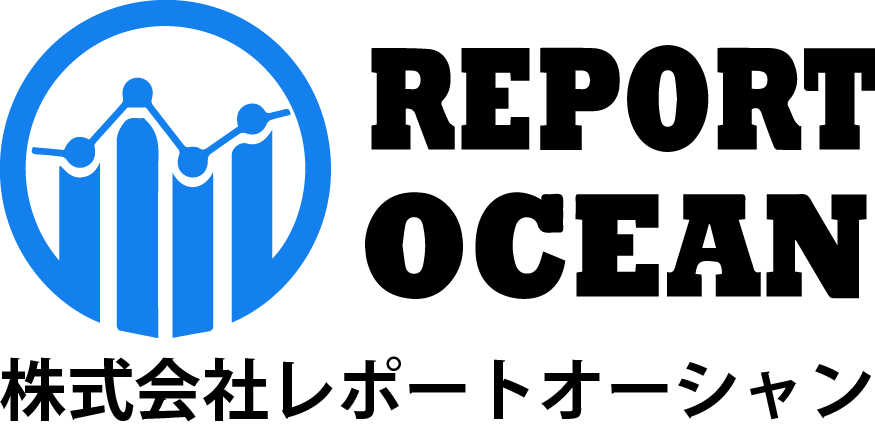日本のプロテイン市場規模、シェア、競合、トレンド分析レポート:供給源別(動物、微生物、植物)、エンドユーザー別(動物飼料、パーソナルケアと化粧品、食品と飲料、サプリメント)の市場規模、シェア、競争環境、動向分析レポート: 2024年から2032 年までの機会分析と産業予測
レポートID : ROJP0524062 |
最終更新 : 2024年05月 |
フォーマット : ![]() :
: ![]() :
: ![]()
1 Preface
2 Scope and Methodology
2.1 Objectives of the Study
2.2 Stakeholders
2.3 Data Sources
2.3.1 Primary Sources
2.3.2 Secondary Sources
2.4 Market Estimation
2.4.1 Bottom-Up Approach
2.4.2 Top-Down Approach
2.5 Forecasting Methodology
3 Executive Summary
4 Japan Protein Market - Introduction
4.1 Overview
4.2 Market Dynamics
4.3 Industry Trends
4.4 Competitive Intelligence
5 Japan Protein Market Landscape
5.1 Historical and Current Market Trends (2018-2023)
5.2 Market Forecast (2024-2032)
6 Japan Protein Market - Breakup by Source
6.1 Animal
6.1.1 Overview
6.1.2 Historical and Current Market Trends (2018-2023)
6.1.3 Market Segmentation
6.1.3.1 Casein and Caseinates
6.1.3.2 Collagen
6.1.3.3 Egg Protein
6.1.3.4 Gelatin
6.1.3.5 Insect Protein
6.1.3.6 Milk Protein
6.1.3.7 Whey Protein
6.1.3.8 Others
6.1.4 Market Forecast (2024-2032)
6.2 Microbial
6.2.1 Overview
6.2.2 Historical and Current Market Trends (2018-2023)
6.2.3 Market Segmentation
6.2.3.1 Algae Protein
6.2.3.2 Mycoprotein
6.2.4 Market Forecast (2024-2032)
6.3 Plant
6.3.1 Overview
6.3.2 Historical and Current Market Trends (2018-2023)
6.3.3 Market Segmentation
6.3.3.1 Hemp Protein
6.3.3.2 Pea Protein
6.3.3.3 Potato Protein
6.3.3.4 Rice Protein
6.3.3.5 Soy Protein
6.3.3.6 Wheat Protein
6.3.3.7 Others
6.3.4 Market Forecast (2024-2032)
7 Japan Protein Market - Breakup by End User
7.1 Animal Feed
7.1.1 Overview
7.1.2 Historical and Current Market Trends (2018-2023)
7.1.3 Market Segmentation
7.1.4 Market Forecast (2024-2032)
7.2 Personal Care and Cosmetics
7.2.1 Overview
7.2.2 Historical and Current Market Trends (2018-2023)
7.2.3 Market Segmentation
7.2.4 Market Forecast (2024-2032)
7.3 Food and Beverages
7.3.1 Overview
7.3.2 Historical and Current Market Trends (2018-2023)
7.3.3 Market Segmentation
7.3.3.1 Bakery
7.3.3.2 Beverages
7.3.3.3 Breakfast Cereals
7.3.3.4 Condiments/Sauces
7.3.3.5 Confectionery
7.3.3.6 Dairy and Dairy Alternative Products
7.3.3.7 Meat/Poultry/Seafood and Meat Alternative Products
7.3.3.8 RTE/RTC Food Products
7.3.3.9 Snacks
7.3.4 Market Forecast (2024-2032)
7.4 Supplements
7.4.1 Overview
7.4.2 Historical and Current Market Trends (2018-2023)
7.4.3 Market Segmentation
7.4.3.1 Baby Food and Infant Formula
7.4.3.2 Elderly Nutrition and Medical Nutrition
7.4.3.3 Sport/Performance Nutrition
7.4.4 Market Forecast (2024-2032)
8 Japan Protein Market – Breakup by Region
8.1 Kanto Region
8.1.1 Overview
8.1.2 Historical and Current Market Trends (2018-2023)
8.1.3 Market Breakup by Source
8.1.4 Market Breakup by End User
8.1.5 Key Players
8.1.6 Market Forecast (2024-2032)
8.2 Kansai/Kinki Region
8.2.1 Overview
8.2.2 Historical and Current Market Trends (2018-2023)
8.2.3 Market Breakup by Source
8.2.4 Market Breakup by End User
8.2.5 Key Players
8.2.6 Market Forecast (2024-2032)
8.3 Central/ Chubu Region
8.3.1 Overview
8.3.2 Historical and Current Market Trends (2018-2023)
8.3.3 Market Breakup by Source
8.3.4 Market Breakup by End User
8.3.5 Key Players
8.3.6 Market Forecast (2024-2032)
8.4 Kyushu-Okinawa Region
8.4.1 Overview
8.4.2 Historical and Current Market Trends (2018-2023)
8.4.3 Market Breakup by Source
8.4.4 Market Breakup by End User
8.4.5 Key Players
8.4.6 Market Forecast (2024-2032)
8.5 Tohoku Region
8.5.1 Overview
8.5.2 Historical and Current Market Trends (2018-2023)
8.5.3 Market Breakup by Source
8.5.4 Market Breakup by End User
8.5.5 Key Players
8.5.6 Market Forecast (2024-2032)
8.6 Chugoku Region
8.6.1 Overview
8.6.2 Historical and Current Market Trends (2018-2023)
8.6.3 Market Breakup by Source
8.6.4 Market Breakup by End User
8.6.5 Key Players
8.6.6 Market Forecast (2024-2032)
8.7 Hokkaido Region
8.7.1 Overview
8.7.2 Historical and Current Market Trends (2018-2023)
8.7.3 Market Breakup by Source
8.7.4 Market Breakup by End User
8.7.5 Key Players
8.7.6 Market Forecast (2024-2032)
8.8 Shikoku Region
8.8.1 Overview
8.8.2 Historical and Current Market Trends (2018-2023)
8.8.3 Market Breakup by Source
8.8.4 Market Breakup by End User
8.8.5 Key Players
8.8.6 Market Forecast (2024-2032)
9 Japan Protein Market – Competitive Landscape
9.1 Overview
9.2 Market Structure
9.3 Market Player Positioning
9.4 Top Winning Strategies
9.5 Competitive Dashboard
9.6 Company Evaluation Quadrant
10 Profiles of Key Players
10.1 Company A
10.1.1 Business Overview
10.1.2 Product Portfolio
10.1.3 Business Strategies
10.1.4 SWOT Analysis
10.1.5 Major News and Events
10.2 Company B
10.2.1 Business Overview
10.2.2 Product Portfolio
10.2.3 Business Strategies
10.2.4 SWOT Analysis
10.2.5 Major News and Events
10.3 Company C
10.3.1 Business Overview
10.3.2 Product Portfolio
10.3.3 Business Strategies
10.3.4 SWOT Analysis
10.3.5 Major News and Events
10.4 Company D
10.4.1 Business Overview
10.4.2 Product Portfolio
10.4.3 Business Strategies
10.4.4 SWOT Analysis
10.4.5 Major News and Events
10.5 Company E
10.5.1 Business Overview
10.5.2 Product Portfolio
10.5.3 Business Strategies
10.5.4 SWOT Analysis
10.5.5 Major News and Events
Company names have not been provided here as this is a sample TOC. Complete list to be provided in the final report.
11 Japan Protein Market - Industry Analysis
11.1 Drivers, Restraints, and Opportunities
11.1.1 Overview
11.1.2 Drivers
11.1.3 Restraints
11.1.4 Opportunities
11.2 Porters Five Forces Analysis
11.2.1 Overview
11.2.2 Bargaining Power of Buyers
11.2.3 Bargaining Power of Suppliers
11.2.4 Degree of Competition
11.2.5 Threat of New Entrants
11.2.6 Threat of Substitutes
11.3 Value Chain Analysis
12 Appendix
無料サンプルを入手する ![]()
この無料サンプルには、トレンド分析から推定・予測まで、さまざまなデータが含まれています。
最新レポート
お問い合わせ
-
- JAPAN : 03-6899-2648
-
- EMAIL : [email protected]







